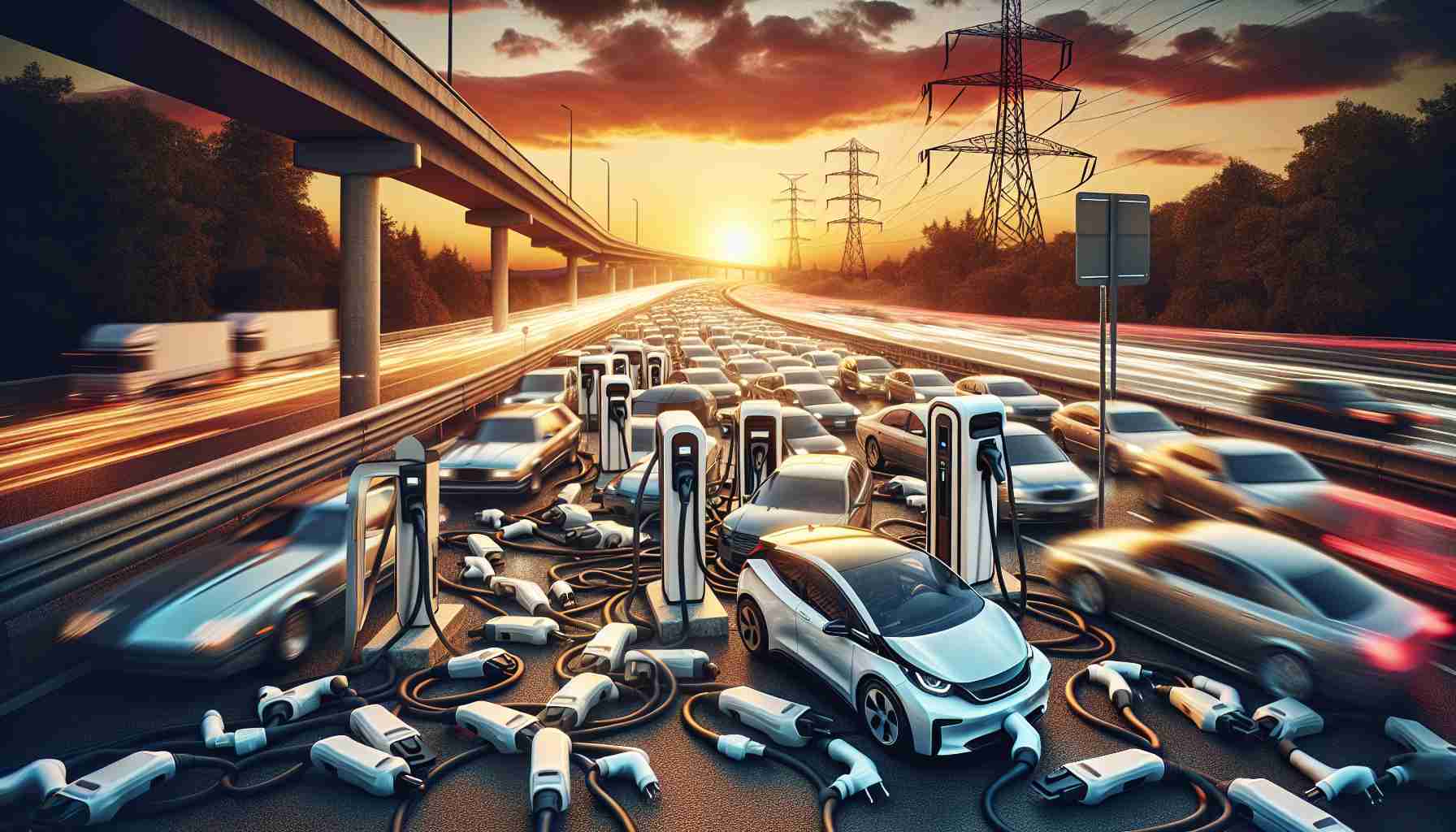- Connecticut’s new car sales are only 11% electric, lagging behind leaders like California.
- Governor Ned Lamont’s decision to pause the phase-out of gas-powered vehicles raises concerns about achieving EV goals.
- Range anxiety is a significant barrier preventing potential EV buyers from making the switch.
- Political divisions within the Democratic party are emerging over the need for more charging infrastructure investment.
- Experts predict EV sales could reach 30% by 2030 with effective policies and charging solutions.
- Innovations in battery technology and improved infrastructure are crucial for easing consumer concerns.
- Changes to federal emissions standards may challenge Connecticut’s local EV regulations.
- Immediate and decisive actions will determine Connecticut’s EV future.
Connecticut is standing at a critical crossroads in its electric vehicle (EV) journey, with only 11% of new car sales going electric—far behind the pace set by EV champions like California. Recent actions by Governor Ned Lamont, who paused the phase-out of gas-powered vehicles, have raised serious concerns about the feasibility of the state’s ambitious EV goals.
A daunting challenge persists: the lack of charging infrastructure. Many potential EV owners are held back by range anxiety, fearing they’ll run out of battery power with no charging station in sight. This growing uncertainty has sparked a political rift among state Democrats, with some advocating for urgent investments in charging stations to support the electric transition.
However, there’s a glimmer of hope. Experts believe that with proactive policies and smarter infrastructure, EV sales could skyrocket to 30% by 2030. Key to this transformation are innovations in battery technology and a vast network of charging stations that can ease driving fears.
Yet, recent shifts back to federal emissions standards may impede efforts to introduce stronger local regulations for EVs. As the state debates its future, the message is clear: Connecticut’s choices today will dictate its electric road ahead. Are they prepared to embrace a sustainable future or will they remain trapped in the gas lane?
In a nutshell, the future of Connecticut’s EV landscape hinges on immediate actions. Will they fuel the EV revolution or stall it indefinitely? The answer lies in decisive movement forward!
Connecticut’s EV Future: Will It Charge Ahead or Stall?
Connecticut is navigating a pivotal moment in its electric vehicle (EV) journey. Despite only 11% of new car sales being electric, Governor Ned Lamont’s recent decision to pause the phase-out of gas-powered vehicles raises concerns about the viability of the state’s ambitious EV plans. One of the most pressing challenges is the lack of charging infrastructure, which creates significant range anxiety among prospective EV owners.
Key Insights and Trends
1. Market Forecast: Experts suggest that with strategic policies and infrastructure development, EV sales could reach 30% by 2030.
2. Innovations and Charging Solutions: Advances in battery technology and an expanded network of charging stations are essential to alleviating consumer fears regarding battery depletion.
3. Political Landscape: Division among state Democrats has surfaced, with differing opinions on the urgency of investing in charging infrastructure to support the transition to electric vehicles.
4. Comparative Analysis: By comparing Connecticut to EV frontrunners like California, it becomes clear that aggressive policy measures are necessary to catch up.
5. Limitations: The delay caused by shifts in federal emissions regulations could further complicate Connecticut’s ability to implement robust local EV policies.
Important Related Questions
1. What impact does charging infrastructure have on EV adoption in Connecticut?
Charging infrastructure is crucial for fostering consumer confidence in EVs. Without sufficient charging stations, consumers are less likely to make the switch due to concerns over where and how to recharge their vehicles.
2. How can Connecticut increase its percentage of electric vehicle sales?
By implementing stronger policies that promote EV incentives, investing in adequate charging infrastructure, and fostering partnerships with private companies to expand charging networks, Connecticut can significantly increase its electric vehicle sales.
3. What role do innovations in battery technology play in Connecticut’s EV market?
Innovations in battery technology could lead to longer-lasting batteries, faster charging times, and greater overall efficiency, making EVs more appealing and practical for consumers. This technological advancement is critical for enhancing the viability of electric vehicles in the state.
Conclusion
Connecticut’s EV landscape is at a decisive juncture. Immediate actions and investments in infrastructure, alongside adaptive public policies, will determine whether the state will successfully transition into an electric future or continue to lag behind its competitors. The choices made today will define the state’s role in the EV revolution.
For more insights on electric vehicles, visit Energy.gov.



















